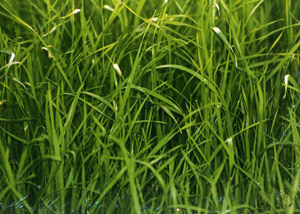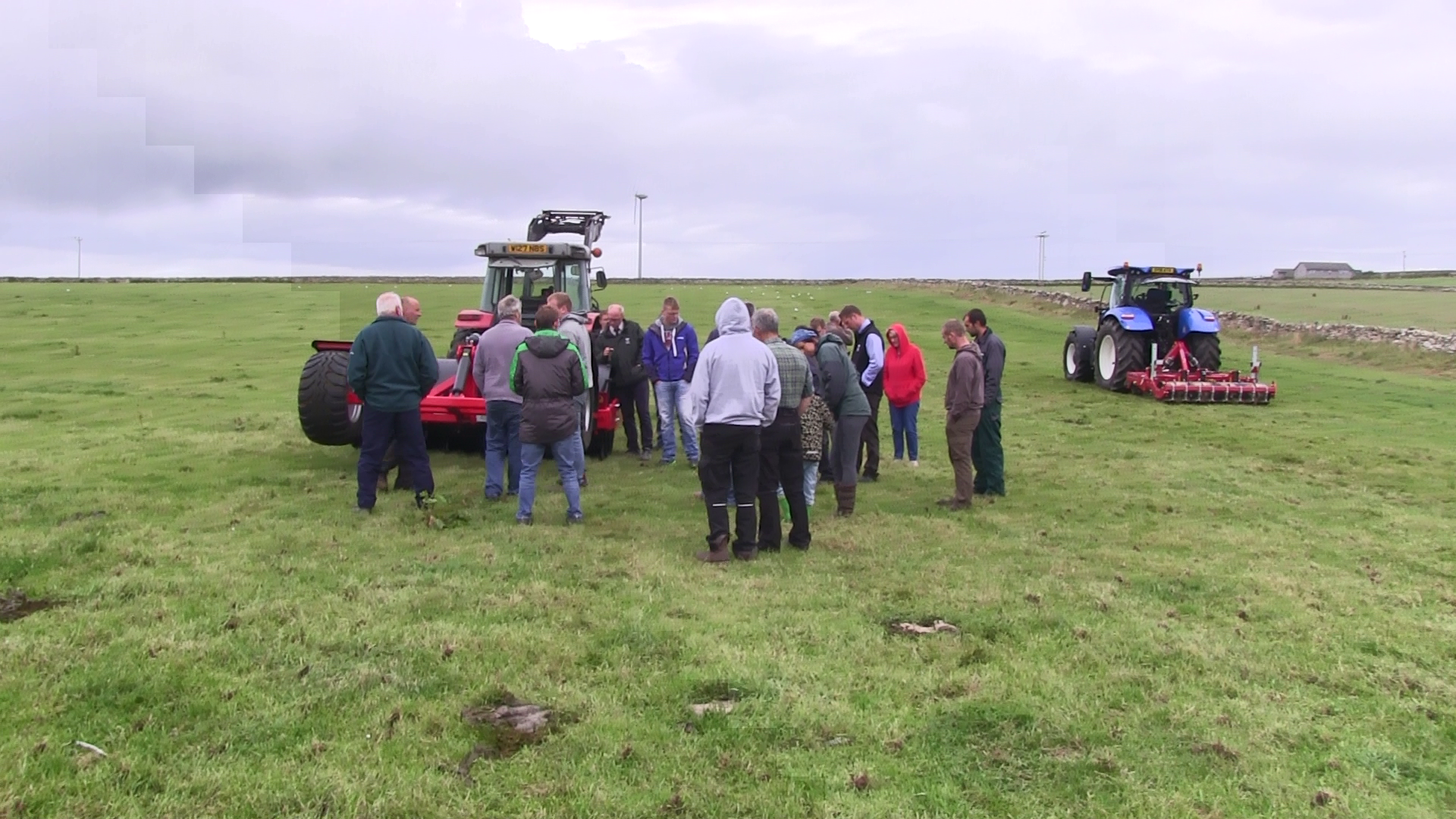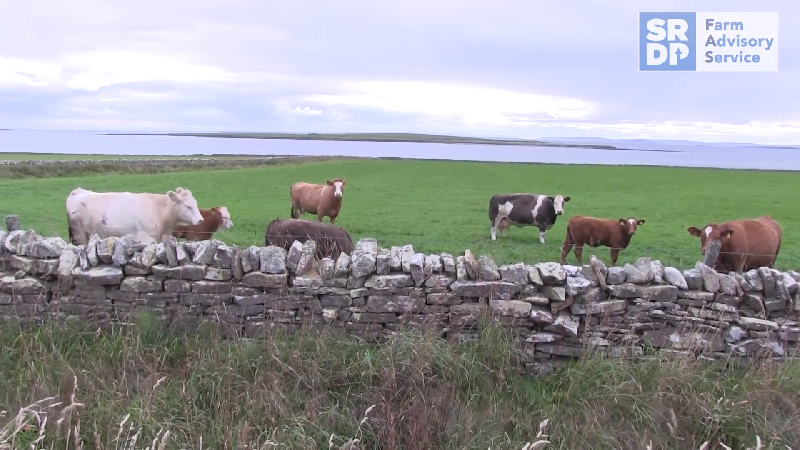Orkney Soil & Nutrient Network: 2nd meeting – event summary
23 January 2019Soil sampling the results from re-tests & selecting grass and clover varieties to suit your farm were the main topics at this event
During the second meeting of the Orkney Soil & Nutrient Network, we revisited the soil testing results discussed at the first meeting. Suspicious of some of the high P & K readings the fields were resampled and the results were found to be very different. This highlighted the importance of observing a 12-week gap between fertiliser applications and sampling. It also underlined the need to take a series of samples across the field, avoiding end rigs. Moving on to profitability – we discussed the costs involved in growing crops such as spring barley & grass silage. The importance of good soil fertility and soil pH was key to helping to improve yields from reduced inputs and making these activities financially viable.
David Lawson, a grassland agronomist with SRUC was our guest speaker for the event. David discussed both grass and clover selection to suit specific soil conditions and the effect of variable nitrogen and sulphur applications on grass quality and yield.
Key take-home messages
- When soil sampling ensure that you observe a 12-week gap between any fertiliser applications and drawing the sample to avoid inaccurate results.
- Also, avoid any areas where FYM or lime may have been tipped in the field in the past.
- Remedial action recommended to raise low and very low soil P & K levels will need to be repeated on more than one occasion before target levels will be achieved.
- The cost of producing spring barley demands that it is grown in soils with target pH, P and K levels to help make it financially viable.
- When selecting grass and clover species, ensure a mixture is selected appropriately to the soil type and conditions to achieve the required results.
- Be aware of the Scottish Recommended List when choosing grass varieties for a new sward and appreciate the potential performance of new varieties against old ones.
Related News
Orkney Soil & Nutrient Network: 1st meeting event summary
This was the first meeting of the Orkney Soil and Nutrient Network Farm based at Midgarth in Stronsay. The meeting focused on the soil, slurry and FYM analyses carried out…
read more >- Valuing Your Soils – Practical Guidance for Scottish Farmers
- This brochure includes useful information about Scotland's agricultural soils and practical advice outlining the upfront financial savings and business benefits of better soil management and the efficient use of resources. Action and problem-specific 'field-sheets' are designed for busy farmers with limited time for reading.
- Topics: Climate Change, Soils, Water Management and Crops and Soils
- Practical Guide: Soil sampling I – How to take a soil sample
- This practical guide details what is required to take a soil sample for analysis that is representative of the area sampled.
- Topics: Climate Change, Soils and Water Management
- Practical Guide: Soil sampling II – Benefits to your business
- This practical guide details how soil sampling can benefit businesses by increasing productivity and create efficiencies on fertiliser inputs through better nutrient planning.
- Topics: Climate Change, Soils and Water Management
- Technical Note (TN656): Soil Information, Texture & Liming Recommendations
- • Web based access to information on your soils on your farm is described. • Soil texture classes of mineral soils are described and identified by hand texturing. • Liming recommendations for different soils and managements are tabulated.
- Topics: Soils
- Better Soil and Grassland Management
- Soil is the raw material from which most food is produced, and is a precious natural resource. Soil conditions on beef and sheep farms directly influence how well grass and forage crops grow, and the quality of feed they produce. As soil plays such an integral part in farming, it is important to assess and monitor its chemical and physical properties.
- Technical note (TN696): Recommended Grass and Clover Varieties 2017-2018
- The agricultural industry in Scotland is co-operating in a scheme to ensure the continuation of the SRUC Recommended List of grass and clover varieties. The scheme, with the support of NFUS,AIC, SSTA and BSPB, involves a contribution for every kilogram of herbage seed sold.
- Topics: Soils and Crops and Soils
Sign up to the FAS newsletter
Receive updates on news, events and publications from Scotland’s Farm Advisory Service



